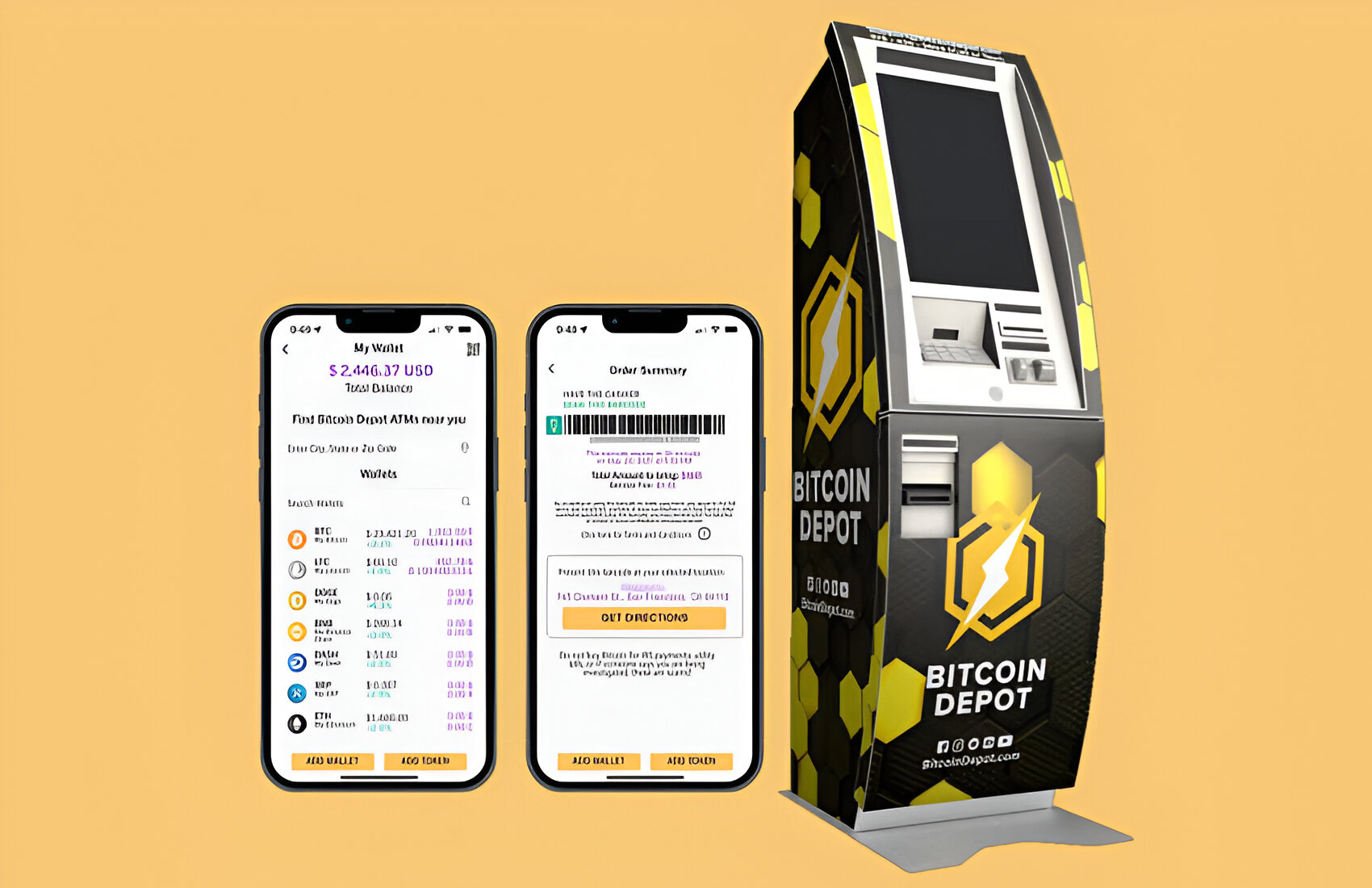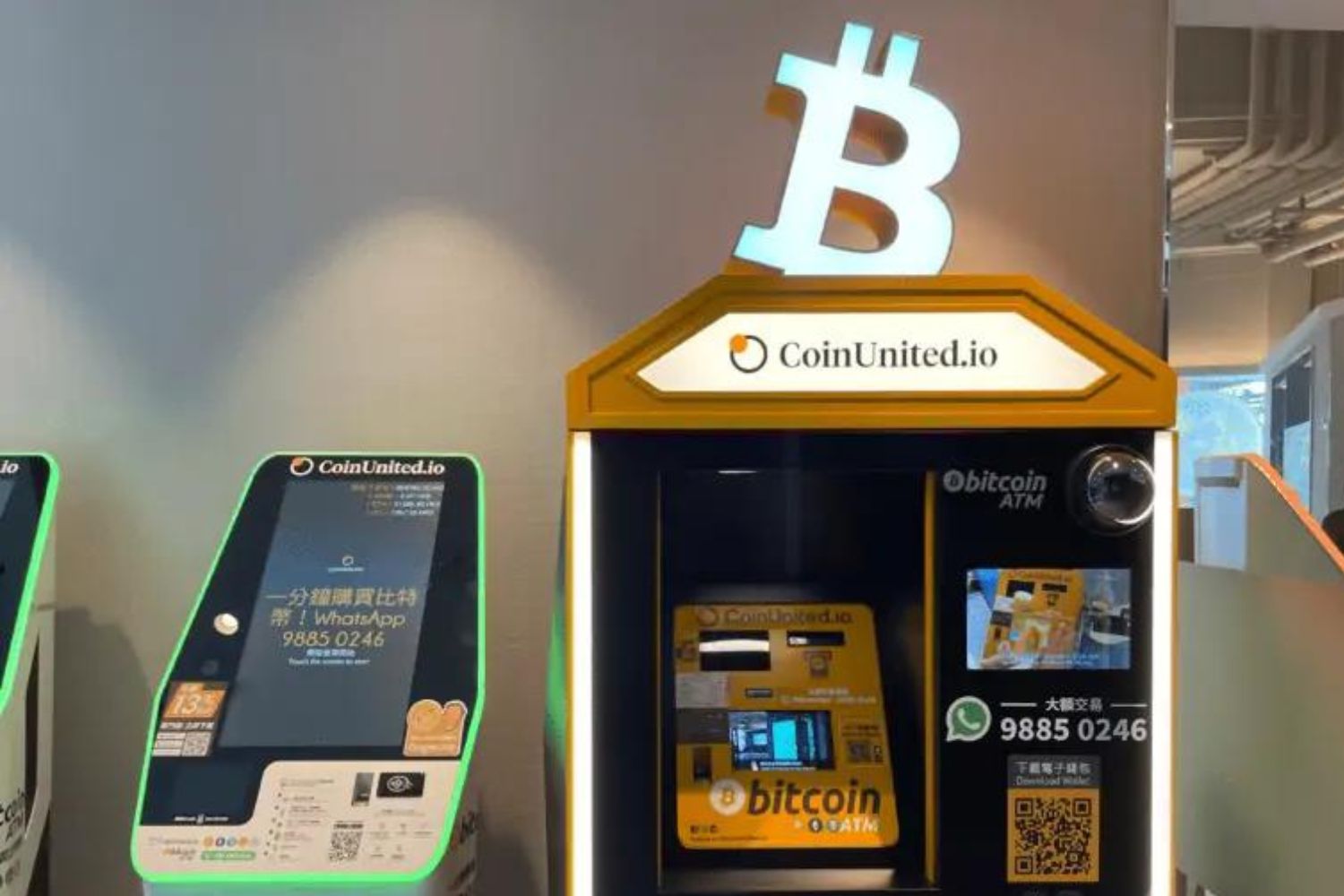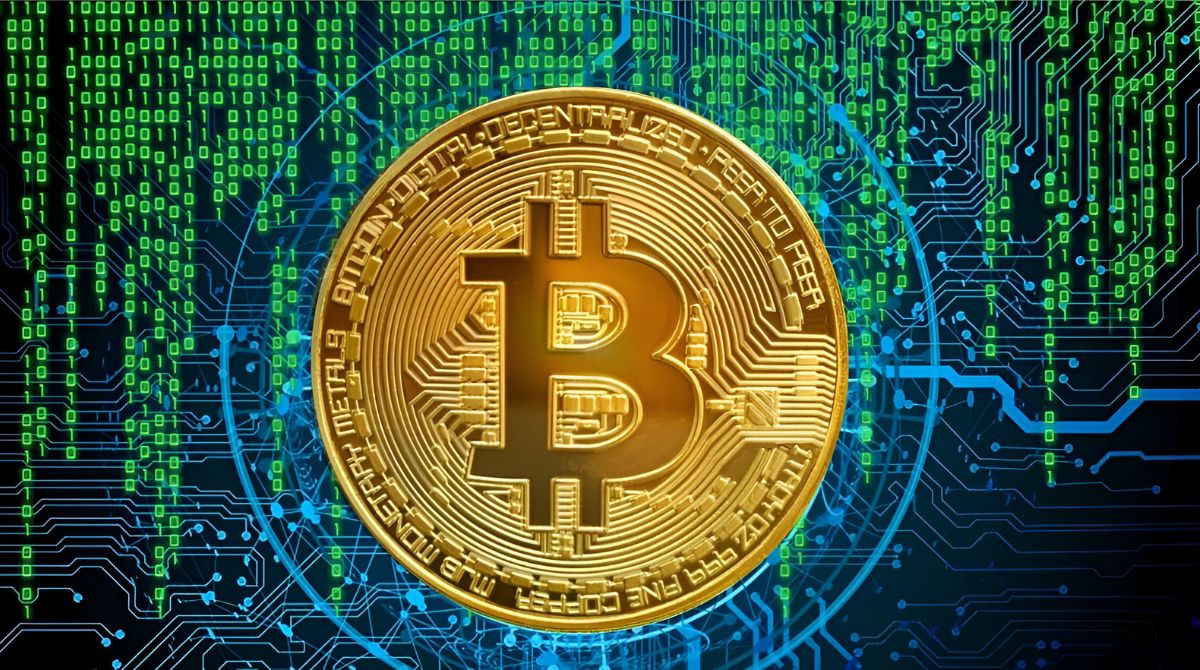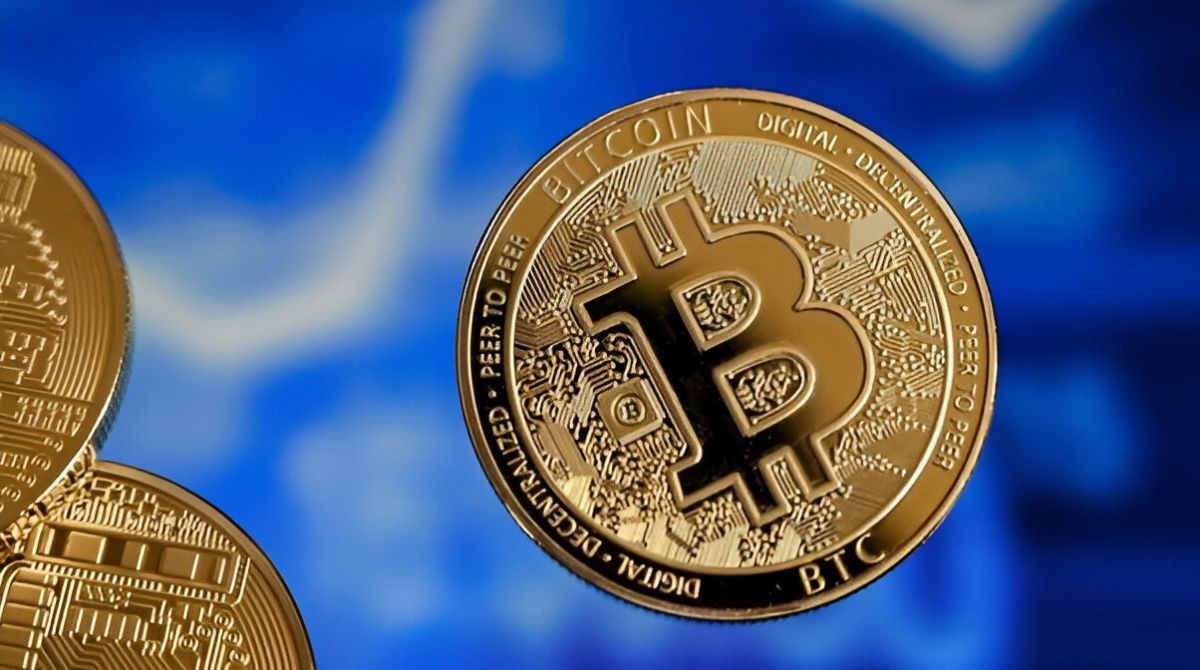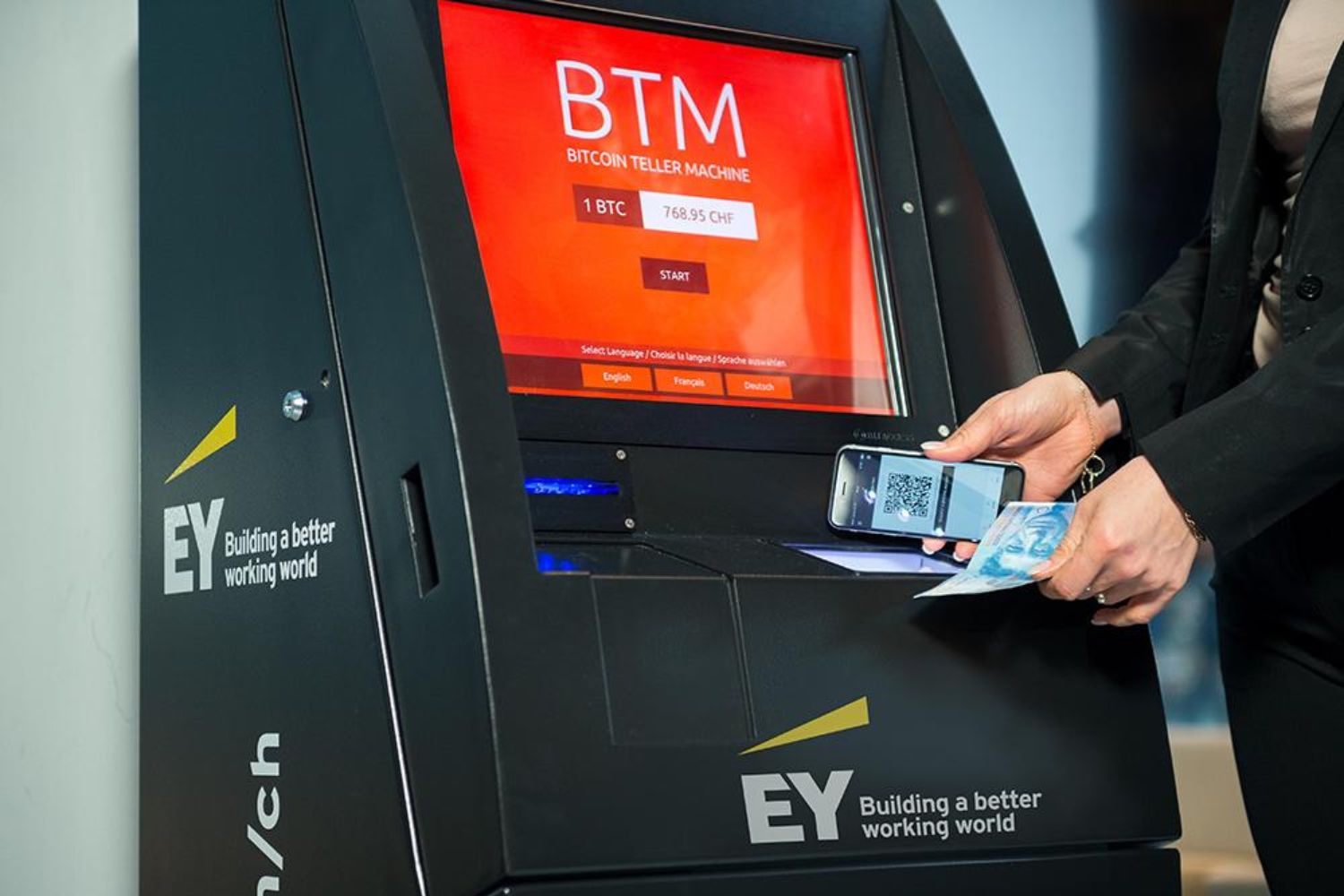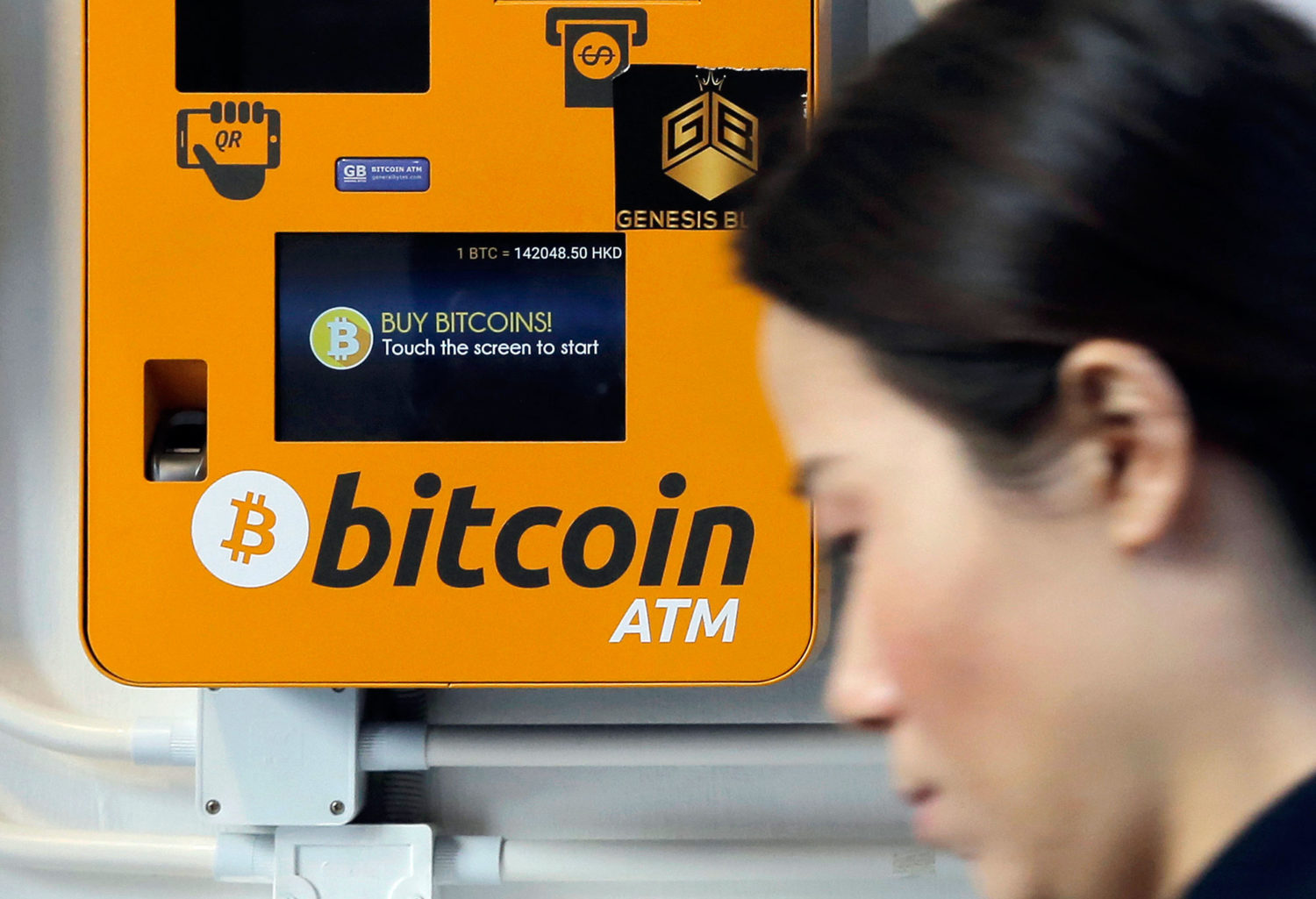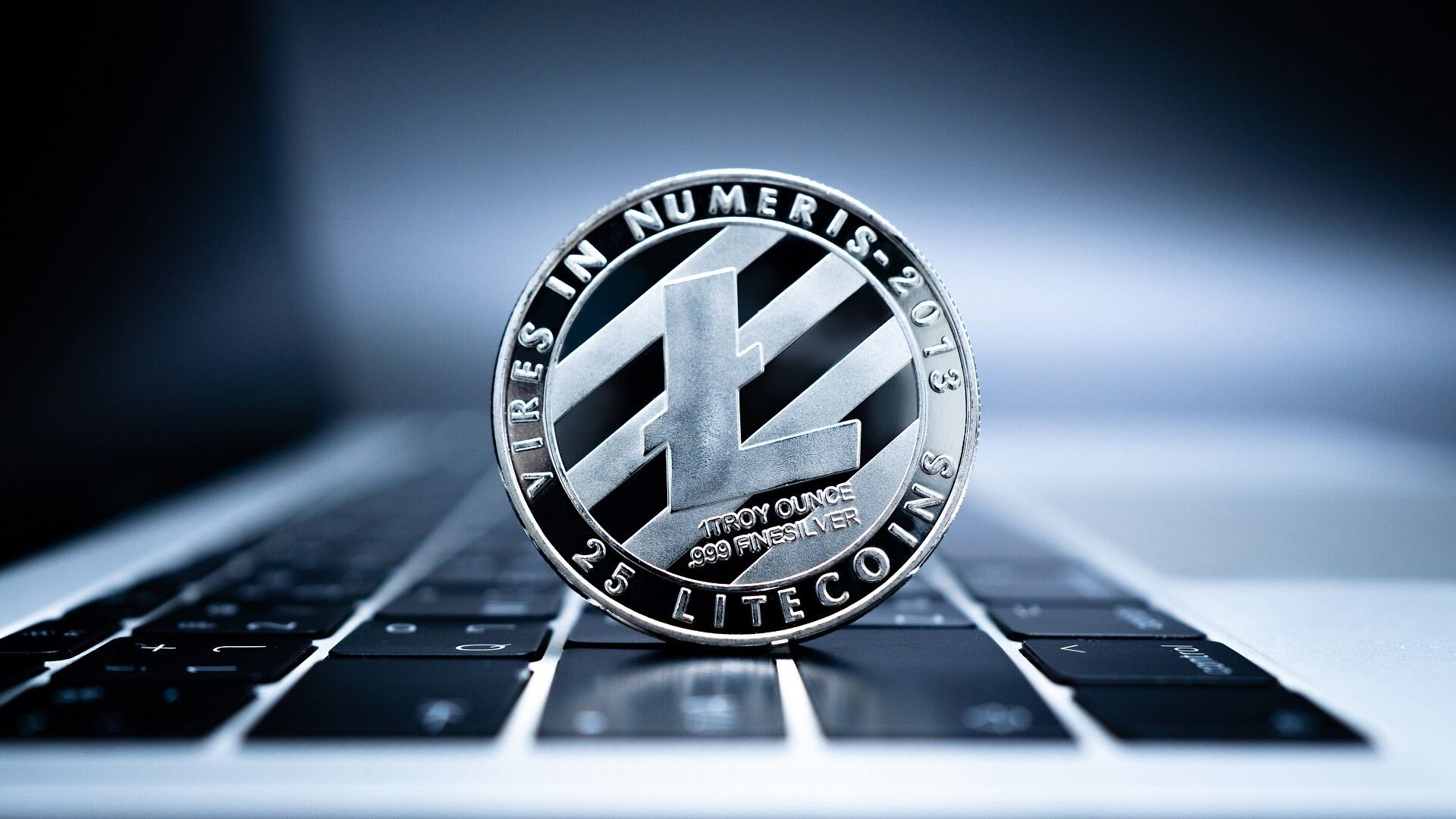Introduction
Welcome to the world of cryptocurrencies, where virtual currencies are reshaping the way we think about money and transactions. As the popularity of digital currencies continues to rise, innovative solutions such as Bitcoin ATMs have emerged to facilitate easy access and adoption. In this article, we will explore the concept of Bitcoin ATMs, how they work, and their benefits and drawbacks.
Bitcoin ATMs, also known as BTMs, are self-service kiosks that allow individuals to buy or sell bitcoins with cash or other traditional forms of payment. These ATMs function similarly to regular ATMs, but instead of dispensing physical cash, they facilitate the exchange of bitcoins.
The use of Bitcoin ATMs has gained traction in recent years, providing a convenient and immediate way for individuals to acquire bitcoins without having to go through online exchanges. This accessibility has contributed to the increasing adoption and acceptance of cryptocurrencies by a wider audience.
Since the launch of the first Bitcoin ATM in 2013, these machines have spread across the globe, with thousands of them now available in various cities and countries. Whether you’re a cryptocurrency enthusiast or someone curious about this digital phenomenon, Bitcoin ATMs offer an approachable entry point into the world of cryptocurrencies.
Although Bitcoin ATMs have some similarities to traditional ATMs, there are some key differences to be aware of. Unlike traditional ATMs which are typically connected to a bank or financial institution, Bitcoin ATMs are usually operated by third-party providers. Additionally, while traditional ATMs offer a range of services such as cash withdrawals and account balances, Bitcoin ATMs solely focus on buying or selling bitcoins.
Moreover, Bitcoin ATMs eliminate the need for complex online transactions or bank transfers when it comes to acquiring bitcoins. Instead, individuals can simply visit a nearby Bitcoin ATM and complete a transaction in a matter of minutes. This accessibility and ease-of-use make Bitcoin ATMs an attractive option for those who prefer a more tangible and straightforward approach to cryptocurrency transactions.
In the following sections, we will delve deeper into how Bitcoin ATMs work, the different types available, how to find a Bitcoin ATM near you, the process of using a Bitcoin ATM, as well as the advantages and considerations associated with these machines.
What Is a Bitcoin ATM?
A Bitcoin ATM is a specialized machine that allows individuals to buy or sell bitcoins using cash or other traditional forms of payment. It functions similarly to a regular ATM but specifically caters to cryptocurrencies. Instead of dispensing physical cash, Bitcoin ATMs facilitate the exchange of bitcoins between the user and the machine.
One of the defining features of Bitcoin ATMs is their ability to bridge the gap between the digital realm of cryptocurrencies and the physical world of cash. They provide a tangible and accessible way for individuals to engage with and acquire bitcoins without the need for complex online transactions or bank transfers.
Bitcoin ATMs can be found in various public locations, such as malls, convenience stores, airports, and even some banks. These machines are typically operated by third-party providers who facilitate the bitcoin transactions.
To use a Bitcoin ATM, individuals need a digital wallet to store their bitcoins. A digital wallet is a software application that allows users to securely store and manage their cryptocurrency holdings. Some Bitcoin ATMs also offer the option to create a new wallet on the spot for users who do not have one already.
When purchasing bitcoins from a Bitcoin ATM, users usually insert cash into the machine’s bill acceptor. The machine then calculates the equivalent amount of bitcoins based on the current exchange rate and credits them to the user’s wallet. Conversely, when selling bitcoins, users initiate the transaction by scanning the QR code of their digital wallet’s receiving address. The machine then dispenses the corresponding amount of cash.
Bitcoin ATMs often provide a user-friendly interface that guides individuals through the steps of the transaction. The interface displays real-time exchange rates, transaction fees, and prompts users to confirm their actions. Some Bitcoin ATMs even offer additional features, such as the ability to purchase other cryptocurrencies like Ethereum or Litecoin.
It is important to note that Bitcoin ATM fees can vary greatly and are typically higher than those associated with online exchanges. These fees cover the costs of operating and maintaining the machines, as well as the risk associated with volatility in the cryptocurrency market.
In the next section, we will delve deeper into the inner workings of Bitcoin ATMs and explore how these machines facilitate seamless cryptocurrency transactions.
How Does a Bitcoin ATM Work?
Bitcoin ATMs operate using a combination of hardware, software, and connectivity to the Bitcoin network. Understanding the inner workings of these machines is crucial to navigating the process of buying or selling bitcoins.
When a user approaches a Bitcoin ATM, they are greeted with a user-friendly interface that guides them through the transaction. The interface typically provides options for buying or selling bitcoins, as well as any additional services offered by the specific machine.
To initiate a transaction, users are usually required to authenticate their identity. This step can be completed by scanning a QR code from their digital wallet or by providing identification documents, depending on the regulations in place in the specific jurisdiction.
Once authenticated, the user is prompted to choose whether they want to buy or sell bitcoins. If buying, they usually have the option to enter the amount of cash they wish to convert into bitcoins. The machine then calculates the equivalent amount of bitcoins based on the current exchange rate and deducts any applicable fees.
If selling, the user scans the QR code of their digital wallet’s receiving address to initiate the transfer. The Bitcoin ATM accesses the user’s wallet and verifies the transaction on the Bitcoin blockchain. Once confirmed, the machine dispenses the corresponding amount of cash.
Bitcoin ATMs connect to the Bitcoin network via an internet connection. This connection allows the machine to access real-time exchange rates, verify transactions, and update its software as needed.
Bitcoin ATMs employ a combination of hardware components to facilitate the transaction process. These components typically include a bill acceptor for cash transactions, a QR code scanner for wallet addresses, and a touchscreen display for user interaction. Some Bitcoin ATMs also incorporate a printer for issuing receipts and additional security features such as biometric scanners.
Bitcoin ATMs can be divided into two main types: one-way and two-way ATMs. One-way ATMs only allow users to buy bitcoins, while two-way ATMs enable both buying and selling transactions. Two-way ATMs are generally more common and provide users with the flexibility to convert their bitcoins into cash if needed.
It’s important to note that the availability and functionality of Bitcoin ATMs may vary depending on the location and the specific operator. Regulations governing the use of Bitcoin ATMs also differ between countries and regions, so it’s essential to familiarize yourself with the local laws and requirements.
In the following sections, we will explore the different types of Bitcoin ATMs, how to find one near you, and the process of using a Bitcoin ATM.
Types of Bitcoin ATMs
Bitcoin ATMs come in different variations, offering various features and functionalities to cater to the diverse needs of users. Understanding the different types of Bitcoin ATMs can help you choose the most suitable option for your cryptocurrency transactions.
1. One-Way Bitcoin ATMs:
One-way Bitcoin ATMs, as the name suggests, only support the purchase of bitcoins. Users can exchange cash for bitcoins using these machines. However, selling bitcoins for cash is not an option with one-way ATMs. These ATMs are commonly found in locations where the demand for buying bitcoins is high, such as airports or popular shopping areas.
2. Two-Way Bitcoin ATMs:
Two-way Bitcoin ATMs are more versatile, as they allow users to both buy and sell bitcoins. Users can convert their bitcoins into cash by initiating a sell transaction and withdrawing the corresponding amount of money from the ATM. Two-way ATMs are typically the preferred choice for users who want the flexibility to convert between bitcoins and cash as needed.
3. Online-Only Bitcoin ATMs:
Online-only Bitcoin ATMs require users to have a digital wallet and internet access to complete transactions. These ATMs do not handle cash directly. Instead, users transfer funds from their digital wallets to the machine, and the machine disburses the equivalent amount of bitcoins. Online-only ATMs are often used by individuals who prefer the convenience of digital transactions and want to avoid handling physical cash.
4. Physical Cash Bitcoin ATMs:
Physical cash Bitcoin ATMs are the most common type of ATMs. They accept and dispense cash to facilitate bitcoin transactions. Users insert cash into the machine to purchase bitcoins, and the machine dispenses cash if the user chooses to sell bitcoins. Physical cash Bitcoin ATMs are popular among both novice users who want a seamless transition between cash and bitcoins and experienced traders who prefer the anonymity and convenience of cash transactions.
5. Robocoin Bitcoin ATMs:
Robocoin was one of the early pioneers in the Bitcoin ATM industry. Robocoin ATMs offered advanced features, including biometric authentication, allowing users to verify their identity using their fingerprints. However, the company ceased operations in 2016. Although Robocoin ATMs are not actively maintained anymore, they are still in use in some locations.
It’s important to note that the availability of different types of Bitcoin ATMs may vary depending on your location. Some regions may have a wide variety of ATMs, while others may have limited options. It’s always a good idea to check online directories or use specific Bitcoin ATM locator apps to find the nearest ATMs and see which types are available.
Now that we’ve explored the types of Bitcoin ATMs, let’s move on to the next section, where we’ll discuss how to find a Bitcoin ATM near you.
Finding a Bitcoin ATM Near You
With the increasing popularity of Bitcoin and other cryptocurrencies, the number of Bitcoin ATMs has grown significantly. Finding a Bitcoin ATM near you is now easier than ever, thanks to various online resources and dedicated Bitcoin ATM locator apps.
Here are some methods you can use to locate a Bitcoin ATM in your area:
1. Online Directories:
Many websites provide comprehensive directories of Bitcoin ATMs worldwide. These directories allow you to search for Bitcoin ATMs by location, providing you with a list of nearby options. Some popular online directories include Coin ATM Radar, CoinFlip, and CoinATMRadar. You can visit these websites and enter your city or address to find the nearest Bitcoin ATMs.
2. Bitcoin ATM Locator Apps:
There are also dedicated Bitcoin ATM locator apps available for both iOS and Android devices. These apps utilize your device’s GPS functionality to pinpoint your location and display the nearest Bitcoin ATMs on a map. Examples of popular Bitcoin ATM locator apps include Coin ATM Radar, Airbitz, and Bitcoin ATM Map.
3. Cryptocurrency Exchanges:
Some cryptocurrency exchanges, such as Coinbase, offer features that allow you to search for Bitcoin ATMs directly from their platforms. These exchanges provide integrated tools that show locations, availability, and even user reviews of Bitcoin ATMs on their websites or mobile apps.
4. Social Media and Online Forums:
Engaging with cryptocurrency communities on social media platforms or online forums can also yield valuable information about nearby Bitcoin ATMs. Users in these communities often share their experiences and knowledge about the availability and locations of Bitcoin ATMs in various regions.
5. Local Bitcoin Meetups and Events:
Bitcoin-focused meetups and conferences can be another valuable resource for finding Bitcoin ATMs. Attendees of these events may have information about the presence of Bitcoin ATMs in the area or can provide recommendations based on their own experiences.
Remember to verify the accuracy of the information you find by cross-referencing multiple sources. Bitcoin ATMs can be subject to frequent changes in availability and location, so it’s always a good idea to double-check before making a trip to a specific Bitcoin ATM.
Once you have located a Bitcoin ATM near you, it’s important to familiarize yourself with the machine’s operating hours, fees, and any identification requirements. This will ensure a smooth and efficient transaction when you visit the Bitcoin ATM.
Now that you know how to find a Bitcoin ATM near you, let’s move on to the next section, where we’ll explore the process of using a Bitcoin ATM to buy or sell bitcoins.
Using a Bitcoin ATM
Using a Bitcoin ATM is a straightforward process that allows individuals to buy or sell bitcoins in a convenient and secure manner. Whether you’re new to cryptocurrencies or an experienced user, understanding the steps involved in using a Bitcoin ATM can help ensure a smooth transaction experience.
Here is a step-by-step guide on how to use a Bitcoin ATM:
1. Find a Bitcoin ATM:
Start by locating a Bitcoin ATM near you using the methods mentioned in the previous section. Choose a machine that suits your needs, such as a one-way or two-way ATM, depending on whether you want to buy or sell bitcoins.
2. Confirm the Machine’s Availability and Services:
Before heading to the Bitcoin ATM, make sure to check its operating hours and the services it offers. Some ATMs may have limitations on the maximum transaction amount or the types of cryptocurrencies available for purchase.
3. Prepare Your Wallet and Identification:
Ensure that you have a digital wallet set up on your smartphone or other devices. Make sure it is funded with enough bitcoins if you plan to sell or with enough cash if you plan to buy. Additionally, some Bitcoin ATMs may require you to verify your identity by providing identification documents, so have them ready if needed.
4. Approaching the Bitcoin ATM:
Once you arrive at the Bitcoin ATM, familiarize yourself with the machine’s layout and interface. Depending on the ATM model, you may be required to start the process by either scanning the QR code of your wallet or selecting the language and transaction type on the screen.
5. Select Transaction Type:
Choose between buying or selling bitcoins, depending on your desired action. If you’re selling, follow the on-screen prompts to initiate the transaction. If you’re buying, enter the amount of cash you wish to convert to bitcoins. The machine will then calculate the equivalent amount of bitcoins based on the current exchange rate.
6. Execute the Transaction:
Follow the instructions displayed on the screen to complete the transaction. If you’re buying, insert the cash into the machine’s bill acceptor. If you’re selling, scan the QR code of your digital wallet’s receiving address. Verify the transaction details displayed on the screen and proceed to confirm the transaction.
7. Wait for Confirmation:
Depending on the ATM’s processing speed and network congestion, it may take a few moments for the transaction to process and confirm on the blockchain. Be patient and wait for the confirmation message on the screen.
8. Collect Receipt and Funds:
Once the transaction is confirmed, the Bitcoin ATM will dispense a receipt with all the transaction details. Keep this receipt for your records. If you’re selling bitcoins, the machine will dispense the corresponding amount of cash. If you’re buying, the machine will transfer the purchased bitcoins to your wallet.
Remember to double-check the transaction details before confirming any transfers and always be cautious of your surroundings when using a Bitcoin ATM. Keep your wallet and personal information secure to protect yourself from potential scams or unauthorized access.
Using a Bitcoin ATM offers a convenient and user-friendly way to engage with cryptocurrencies. In the following section, we will discuss the benefits and drawbacks of Bitcoin ATMs to help you make an informed decision about using them in your cryptocurrency transactions.
Benefits and Drawbacks of Bitcoin ATMs
Bitcoin ATMs offer several benefits that make them an appealing option for individuals interested in buying or selling bitcoins. However, like any financial service, there are also some drawbacks to consider. Here, we will explore the advantages and disadvantages of using Bitcoin ATMs.
Benefits of Bitcoin ATMs:
1. Accessibility:
Bitcoin ATMs provide a convenient and accessible way for anyone to participate in the world of cryptocurrencies. These machines are usually available 24/7 in public locations, making it easy for users to buy or sell bitcoins at their convenience.
2. Instant Transactions:
Bitcoin ATM transactions are typically processed in real-time, allowing users to complete their transactions quickly. This immediate exchange between cash and bitcoins eliminates the need for lengthy verification processes or waiting times associated with online exchanges.
3. Privacy and Anonymity:
Bitcoin ATMs provide a degree of privacy and anonymity. While some ATMs may require identity verification, others allow users to make transactions without disclosing personal information. This can be appealing to individuals who prioritize privacy.
4. Tangible Experience:
Bitcoin ATMs offer a physical experience by allowing users to interact with a machine rather than conducting transactions solely through digital interfaces. This tangible aspect can be helpful for those who prefer a more familiar and tactile approach to financial transactions.
Drawbacks of Bitcoin ATMs:
1. Higher Fees:
Bitcoin ATM operators charge higher transaction fees compared to online exchanges. These fees cover the costs of operating and maintaining the machines and can vary widely depending on the location and the ATM operator. It’s essential to be mindful of the fees associated with each transaction.
2. Limited Locations and Availability:
While the number of Bitcoin ATMs has been increasing, they are still relatively less common compared to traditional ATMs. Some areas may have limited or no Bitcoin ATMs available, making it inconvenient for individuals who do not have easy access to one.
3. Lack of Regulation:
Bitcoin ATMs are operated by third-party providers and are subject to varying degrees of regulation, depending on the jurisdiction. This lack of uniform regulations means that standards of operation, security measures, and customer support can vary between different Bitcoin ATM operators.
4. Volatility Risks:
Bitcoin prices are notoriously volatile, and the exchange rates displayed on Bitcoin ATMs may not always reflect the current market value accurately. Users should be aware of the potential risks associated with participating in a market known for its volatility.
Despite these drawbacks, Bitcoin ATMs continue to gain popularity as a means of buying and selling bitcoins. Understanding both the benefits and limitations can help users make informed decisions as they navigate the world of cryptocurrencies.
In the next section, we will discuss the importance of regulations and security measures when it comes to Bitcoin ATMs.
Regulations and Security Measures for Bitcoin ATMs
Bitcoin ATMs are subject to regulations and require various security measures to ensure the safety and legality of transactions. Governments and regulatory bodies around the world are continually developing guidelines to govern the operation of Bitcoin ATMs and the use of cryptocurrencies. Here, we will explore the importance of regulations and security measures for Bitcoin ATMs.
Regulations:
1. KYC/AML Compliance:
Know Your Customer (KYC) and Anti-Money Laundering (AML) regulations are crucial in combating illicit activities. Many jurisdictions require Bitcoin ATM operators to implement these measures to verify the identity of users and prevent money laundering and illegal transactions.
2. Licensing and Registration:
Bitcoin ATM operators may be required to obtain specific licenses or register with regulatory authorities to operate legally within a jurisdiction. These licenses ensure that operators adhere to certain standards and meet regulatory compliance.
3. Reporting Requirements:
Bitcoin ATM operators are often obligated to report certain transaction details to regulatory entities. These reporting requirements help maintain transparency and enable authorities to monitor cryptocurrency transactions for unlawful activities.
Security Measures:
1. Encryption and Secure Communication:
Bitcoin ATMs employ robust encryption methods to secure user data and ensure secure communication with the Bitcoin network. This encryption safeguards personal information, such as wallet addresses and transaction details, from unauthorized access.
2. Physical Security:
Bitcoin ATM operators implement measures to protect the physical integrity of their machines. This includes secure enclosures, tamper-proof casings, and alarm systems to deter theft or vandalism attempts.
3. Two-Factor Authentication (2FA):
To enhance user security, some Bitcoin ATMs offer optional two-factor authentication. This additional layer of security verifies the user’s identity by requiring a second form of verification, such as a unique code sent to their mobile device.
4. Compliance with Regulatory Guidelines:
Bitcoin ATM operators must comply with relevant regulatory guidelines to ensure the legality of their operations. This includes implementing appropriate measures to prevent money laundering, fraud, and other illegal activities.
It is important for Bitcoin ATM users to be aware of the regulations and security measures in place when using these machines. Users should choose ATMs operated by compliant and reputable providers to ensure the integrity of their transactions and the safety of their personal information.
As governments continue to refine their approach to cryptocurrencies, regulations surrounding Bitcoin ATMs are likely to evolve. Staying informed about the current regulations in your jurisdiction can help you navigate the world of Bitcoin ATMs more effectively and make informed decisions while engaging with cryptocurrencies.
In the concluding section, we will summarize the key points discussed throughout the article and provide a final thought on Bitcoin ATMs.
Conclusion
Bitcoin ATMs have emerged as a user-friendly and accessible solution for individuals looking to buy or sell bitcoins. These machines bridge the gap between the digital realm of cryptocurrencies and the physical world of cash, allowing users to engage with virtual currencies in a tangible way. Understanding the concept and functionality of Bitcoin ATMs is essential for those interested in exploring the world of cryptocurrencies.
In this article, we discussed how Bitcoin ATMs operate and explored the different types available. We also explored methods for finding Bitcoin ATMs near you and provided a step-by-step guide on using these machines effectively.
Bitcoin ATMs offer numerous advantages, including accessibility, instant transactions, privacy, and a tangible experience. However, there are also drawbacks to consider, such as higher fees, limited availability, lack of regulation, and volatility risks associated with cryptocurrency transactions.
To ensure secure and legal transactions, governments and regulatory bodies have implemented regulations and security measures for Bitcoin ATMs. Compliance with KYC/AML requirements, licensing, and reporting obligations are essential for operators. Implementing encryption, physical security measures, two-factor authentication, and compliance with regulatory guidelines help protect user information and ensure the integrity of transactions.
As the cryptocurrency landscape evolves, so too will the regulations and security measures surrounding Bitcoin ATMs. Staying informed about these changes is crucial for users to make informed decisions and maintain the security and legality of their transactions.
Bitcoin ATMs continue to play a significant role in expanding the adoption and accessibility of cryptocurrencies. Whether you’re a cryptocurrency enthusiast or someone curious about this digital phenomenon, Bitcoin ATMs offer a user-friendly and practical way to engage with virtual currencies.
Remember to do your due diligence, research the specific Bitcoin ATM operators, and familiarize yourself with the regulations in your jurisdiction when using Bitcoin ATMs. By doing so, you can navigate the world of cryptocurrencies with confidence and seize the benefits that Bitcoin ATMs have to offer.









